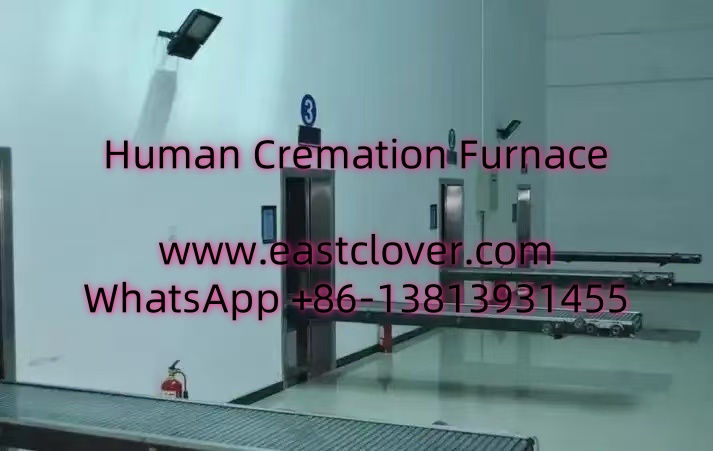Introduction
The bond between pets and their owners has grown stronger over the years, leading to increased demand for dignified end-of-life care for animals. Veterinary hospitals and professionals now play a critical role in guiding pet owners through this emotional process. A pet cremation furnace is an essential tool for ensuring compassionate aftercare, enabling clinics to offer cremation services in-house or partner with specialized providers. This news explores the technical, ethical, and operational aspects of pet cremation furnaces and their integration with memorial services.
Key Features of Modern Pet Cremation Furnaces
Customization and Capacity
Modern pet cremation furnaces are designed to accommodate animals of all sizes, from small birds to large dogs. Units often feature adjustable combustion chambers and programmable cycles, allowing for energy-efficient operation tailored to each pet’s unique requirements.
Emission Control and Compliance
Advanced filtration systems reduce particulate emissions, ensuring compliance with environmental regulations such as EPA standards. Dual-chamber designs and secondary burners minimize harmful byproducts, promoting eco-friendly practices.
Safety and Automation
Automated temperature controls, pressure sensors, and emergency shutdown mechanisms protect both operators and equipment. Stainless-steel construction and heat-resistant insulation enhance durability and safety.
Individual vs. Communal Cremation
Veterinary hospitals can choose between individual cremation (dedicated to a single pet) or communal cremation. Clear communication with pet owners about these options is crucial for maintaining trust.
Choosing the Right Cremation Furnace
Factors to consider include:
- Volume: Clinics with high caseloads may require larger units or multiple furnaces.
- Space: Compact models are ideal for clinics with limited facilities.
- Energy Source: Electric, gas, or propane-powered options vary in cost and efficiency.
- Certifications: Look for ISO-compliant or CE-marked equipment.
Benefits for Veterinary Hospitals
Enhanced Client Satisfaction
Offering in-house cremation services allows families to receive ashes promptly, fostering trust and loyalty.
Revenue Opportunities
Cremation services and memorial products (e.g., urns, paw-print kits) create additional income streams.
Ethical Responsibility
Ensuring humane and respectful treatment of remains aligns with veterinary oaths and community expectations.
Integrating Memorial Services
Partnering with memorial service providers can expand offerings:
- Custom urns and jewelry made from ashes.
- Digital memorials and biodegradable burial options.
- Grief counseling referrals.
Environmental and Regulatory Considerations
Compliance with local air quality standards is mandatory. Regular maintenance and emission testing ensure minimal environmental impact. Some clinics opt for carbon-neutral offsets or water-based cremation (alkaline hydrolysis) as eco-friendly alternatives.
Cost and Budgeting
Initial costs range from $15,000 to $100,000+ depending on size and features. Leasing options and third-party partnerships can reduce upfront expenses. Consider long-term ROI from service fees and client retention.
Installation and Maintenance
Proper ventilation, electrical/gas infrastructure, and safety clearances are critical during installation. Scheduled cleaning, filter replacements, and professional inspections prolong equipment lifespan.
Case Studies
Urban Animal Hospital
A mid-sized clinic in Chicago integrated a mid-range pet cremation furnace, boosting revenue by 20% within a year. They partnered with a local artisan to offer custom urns, enhancing client satisfaction.
Rural Veterinary Practice
A small practice in Oregon opted for a compact electric furnace, reducing reliance on third-party services. They used social media to promote eco-friendly cremation, strengthening community ties.
www.southclover.com
Pet cremation furnaces empower veterinary hospitals to provide compassionate end-of-life care while meeting operational and ethical goals. By selecting the right equipment and integrating memorial services, clinics can support grieving families, generate revenue, and uphold environmental standards. As the pet care industry evolves, in-house cremation services will remain a cornerstone of holistic veterinary practice.
FAQs
How much does a pet cremation furnace cost?
Prices vary from $15,000 for basic models to over $100,000 for high-capacity, automated units. Leasing and financing options are often available.
What certifications should I look for?
Ensure compliance with ISO 9001, EPA emissions standards, and local health regulations. CE marks indicate adherence to EU safety norms.
Can cremation furnaces handle large pets?
Yes—many industrial-grade furnaces accommodate pets up to 200+ pounds. Confirm chamber dimensions and weight limits with the manufacturer.
How do I dispose of cremated remains safely?
Ashes are inert and non-toxic. Scattering gardens, biodegradable urns, or communal burial sites are common options.
What maintenance is required?
Daily ash removal, monthly filter cleaning, and annual professional inspections are recommended. Follow the manufacturer’s maintenance schedule.

Comments are closed